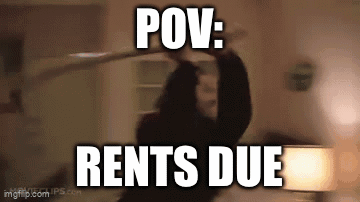Is It Better to Have Savings or Pay Off Debt?
Stuck choosing between saving or paying off debt? You’re not alone—and you don’t have to pick just one. Learn how to build a safety net and crush high-interest debt with a strategy that fits real life, not a spreadsheet. Start where you are. Progress starts here.

You’ve got a little extra money—maybe a tax refund, a side hustle check, or some surprise birthday cash—and suddenly you’re standing at a financial fork in the road.
Should you throw it at your credit card debt?
Or stash it in savings just in case life throws another curveball (again)?
It’s a tough call—especially when the internet gives you 52 different answers and they all start with “Well, it depends…”
And while that’s technically true, what if you don’t have the luxury of choosing?
What if your rent is due, your credit card minimums are creeping up, your kid needs new shoes, and your car just started making that weird noise again?
Here’s the real-life, real-talk answer:
You need both.
But the order—and strategy—matters.
Let’s break it down in a way that actually makes sense for your life.

The Classic Tug-of-War: Debt vs. Savings
If you’ve ever googled this question and left more confused than when you started, you’re not alone.
Financial gurus love to say, “It depends on your interest rate.” And yeah… sure. Mathematically, that makes sense.
But what happens when math meets real life?
What happens when you’re managing anxiety, burnout, caregiving duties, job changes, and surprise vet bills?
You don’t just need the smart answer.
You need the sustainable one.
Step 1: Build a Small Emergency Fund First
Before you go beast mode on your debt, you need one thing: breathing room.
That’s what a small emergency fund gives you.
Even if it’s just $500 to $1,000, having that cushion means you won’t have to swipe a credit card the next time life happens—because it will. Flat tires. Unexpected copays. School field trips.
Think of your emergency fund like a seatbelt:
It doesn’t prevent the accident, but it keeps you from flying through the windshield.
🧾 This aligns with Money Rule #3 from my free guide: Build an emergency fund.
👉 Download the 7 Money Rules You Must Learn Before It’s Too Late
Why an Emergency Fund Matters More Than Ever
Let’s say you skip this step and go straight into debt payoff. You’re doing great until your dog swallows a sock or your kid gets strep right after your deductible reset.
Suddenly, you’re back to the credit card—and all the emotional weight that comes with it.
But with an emergency fund? That same situation becomes a blip, not a backslide.
An emergency fund isn’t just about money. It’s about mental bandwidth.
It turns a financial crisis into an inconvenience—and that shift is priceless.

Step 2: Focus on High-Interest Debt Next
Once you’ve got that small savings cushion, it’s time to shift your attention to the debt that’s costing you the most.
Because here’s the thing: credit card debt is expensive.
Most cards charge 18% to 29% interest. So that balance you’re carrying? It’s growing even when your bank account isn’t.
If you’re only making minimum payments, you’re mostly just paying interest—barely touching the actual balance.
Here’s how to attack it strategically:
🔥 Use the Debt Avalanche Method:
- Pay off the debt with the highest interest rate first
- Keep making minimum payments on the others
- Roll your payments into the next balance as each one disappears
The avalanche method saves you the most money in the long run and speeds up your progress—without requiring you to live off peanut butter and rice cakes.
📘 Need help keeping it all straight?
👉 My Financial Planner Bundle includes a debt tracker, credit tracker, and savings planner to help you juggle both goals without dropping the ball.
But Wait… Can You Do Both?
Yes. And in fact—you should.
Once you’ve built your small emergency fund and started attacking debt, you can (and should) still save a little on the side.
Even if it’s just $10 a week.
Because what you’re building isn’t just a savings account. You’re building consistency.
And that consistency trains your brain to stop panicking and start planning.
It also shifts your identity—from someone who’s just trying to get by to someone who’s building financial confidence one step at a time.
Rewriting the “Either/Or” Mindset
We’ve been taught that financial success means doing one big thing “the right way.”
But the truth? Financial progress isn’t linear.
You’ll have seasons where savings matters more. You’ll have seasons where debt payoff becomes urgent. And you’ll have seasons where you just have to stay afloat.
None of that makes you bad with money.
It makes you human.
Meet Kara: A Real-Life Scenario
Kara is a single mom with two kids. She earns $2,600/month after taxes and has about $3,000 in credit card debt at 25% interest. She also has no savings.
She takes her $600 tax refund and breaks it up like this:
- $300 into a starter emergency fund
- $250 toward her highest-interest card
- $50 into a backup savings account for upcoming school expenses
Over the next few months, she uses SendIt (a work-from-home side hustle that pays for mailing envelopes) to earn an extra $100/month.
She applies $75 toward her debt and stashes $25 into savings.
In 9 months, she:
- Pays off over $1,000 in debt
- Builds up a $900 savings buffer
- Gains massive confidence in managing her money
She didn’t win the lottery. She didn’t follow a “get rich quick” scheme.
She simply had a plan that worked for her life.
👉 Click here to learn more about SendIt
How to Build Savings Without Feeling Deprived
- Use cash-back or rebate apps and move that money straight to savings
- Automate a small weekly transfer—$5, $10, whatever you can
- Unsubscribe from retail emails to reduce temptation
- Name your savings accounts something exciting (“Peace Fund” or “Freedom Jar”)
It’s not about restriction—it’s about building confidence.
Learn Why Financial Literacy Matters (More Now Than Ever)
We’re not failing with money because we’re lazy or bad with numbers—we’re failing because we were never taught how it works.
The free How Money Works ebook breaks down the real cost of financial illiteracy and why understanding money basics is the first step to building a better future. It’s eye-opening, empowering, and written for real life—not just Wall Street.
👉 Download the How Money Works – Ebook Overview
And if you want someone to walk through it with you, book a complimentary call with me and my gal Joy. We’ll help you figure out your next best step—without judgment or jargon.
👉 Book Your Free Intro Financial Strategy Call
From Someone Balancing Both
I’m not here to tell you to pick one side like it’s a financial Hunger Games.
I’m here to remind you that real life isn’t black and white—and your plan doesn’t have to be either.
Start with your safety net.
Then tackle what’s costing you the most.
Then build both—brick by brick.
👉 Download the 7 Money Rules Free Guide
👉 Grab the Financial Planner Bundle ($47)
👉 Download the Free “How Money Works” Ebook
👉 Book Your Free Intro Strategy Call
You’re not behind. You’re just getting started—with more clarity, more support, and better tools than ever before.
Affiliate Disclaimer
This blog may contain affiliate links, which means I may earn a small commission if you click on a link and make a purchase—at no extra cost to you. As an affiliate, I only recommend products that I personally use, trust, and believe will add value to my readers. Your support helps keep this content free and allows me to continue sharing helpful tips and resources.
I am not a medical professional, and the information provided on this blog is for educational and informational purposes only. Always consult with a qualified healthcare provider before making any changes to your skincare or wellness routine.